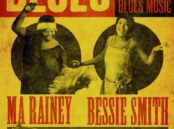[dropcap style=”font-size:100px; color:#992211;”]I[/dropcap]f we can build a machine that can tell the difference between a violin and a piano, how long until it can tell between Jessie J and Katy Perry?
And EXTERMINATE them!
New research, published in PLOS Computational Biology, offers insight into the neural underpinnings of musical timbre. Mounya Elhilali, of Johns Hopkins University and colleagues have used mathematical models based on experiments in both animals and humans to accurately predict sound source recognition and perceptual timbre judgments by human listeners.
A major contributor to our ability to analyze music and recognize instruments is the concept known as ‘timbre’. Timbre is a hard-to-quantify concept loosely defined as everything in music that isn’t duration, loudness or pitch. For instance, timbre comes into play when we are able to instantly decide whether a sound is coming from a violin or a piano.
[quote]Timbre is a hard-to-quantify concept loosely defined as everything in music that isn’t duration, loudness or pitch. [/quote]
The researchers at The John Hopkins University set out to develop a mathematical model that would simulate how the brain works when it receives auditory signals, how it looks for specific features and whether something is there that allows the brain to discern these different qualities.
The authors devised a computer model to accurately mimic how specific brain regions transform sounds into the nerve impulses that allow us to recognize the type of sounds we are listening to. The model was able to correctly identify which instrument was playing (out of a total of 13 instruments) to an accuracy rate of 98.7 percent.
[quote]A violin and a cello are perceived as closer to each other than a violin and a flute[/quote]
The model mirrored how human listeners make judgment calls regarding timbre. The researchers asked 20 people to listen to two sounds played by different musical instruments. The listeners were then asked to rate how similar the sounds seemed. A violin and a cello are perceived as closer to each other than a violin and a flute. The researchers also found that wind and percussive instruments tend to overall be the most different from each other, followed by strings and percussions, then strings and winds. These subtle judgments of timbre quality were also reproduced by the computer model.
“There is much to be learned from how the human brain processes complex information such as musical timbre and translating this knowledge into improved computer systems and hearing technologies”, Elhilali said.
###
CITATION: Patil K, Pressnitzer D, Shamma S, Elhilali M (2012) Music in Our Ears: The Biological Bases of Musical Timbre Perception. PLoS Comput Biol 8(11):e1002759. doi:10.1371/journal.pcbi.1002759
Source: http://www.ploscompbiol.org/doi/ 10.1371/journal.pcbi.1002759
Sidebar Image: Kongsky/FreeDigitalPhotos.net

The aim of art is to represent not the outward appearance of things, but their inward significance. – Aristotle




















